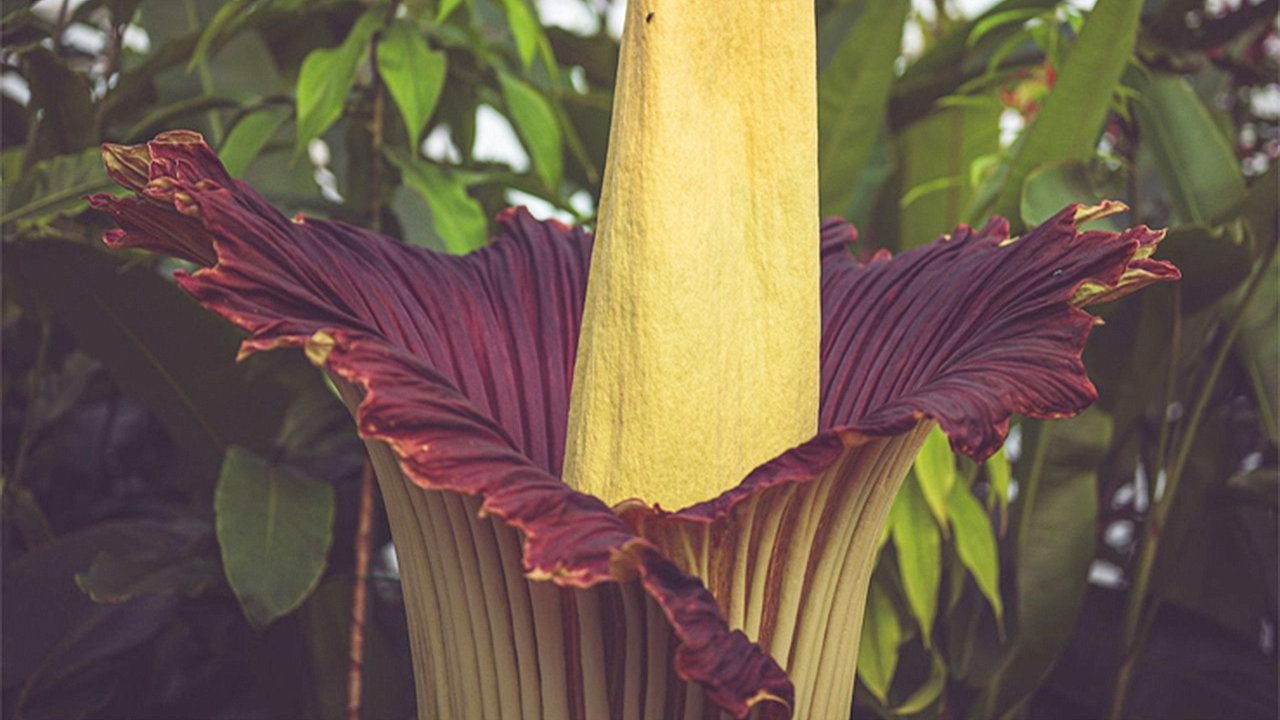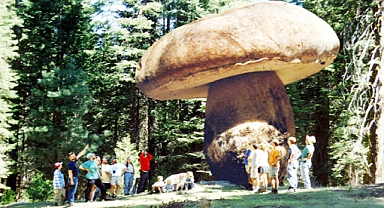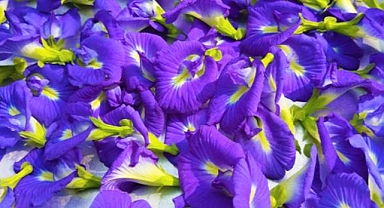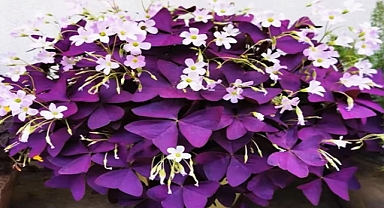I joined the slow-moving queue inside the warm, humid glasshouse where the plant was displayed. The air was thick with moisture as we passed displays of carnivorous plants and winding rhododendrons. At the heart of the exhibit stood the titan arum: a tall yellow spike emerging from a crinkled, green petal-like spathe with purplish edges. It’s the flower’s stench that earns it the name "corpse plant," though opinions differ on exactly what it smells like."To me, it smells like an overflowing food bin," said Paulina Maciejewska-Daruk, a horticulturist at RBGE who has cared for New Reekie for over a decade. Others have likened the odor to rotting fish, rancid cheese, or even sweaty socks.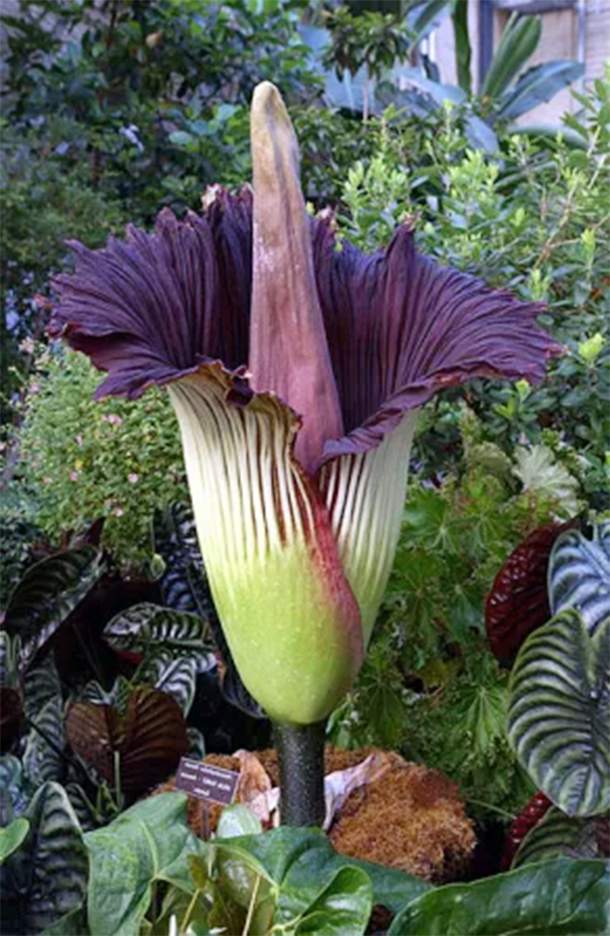 A Rare and Tricky Bloom
A Rare and Tricky Bloom
New Reekie is a 22-year-old titan arum that arrived in Edinburgh in 2003 from the Netherlands. It began as a small dormant corm (a tuber-like structure), no bigger than an orange. By 2010, it had grown so massive that zoo-grade scales, typically used for baby elephants, were needed to weigh it—coming in at an astonishing 153.9kg (339 lbs). The plant first bloomed in 2015, and since then, it has flowered every two to three years. My visit coincided with its fifth bloom.Paulina describes the plant as surprisingly easy to cultivate, needing little more than heat, water, and fertilization. But when the flower is about to bloom, things get hectic. "It’s like getting a child ready for the big world," she joked, reflecting on the intensive preparations required for such a rare event.The flowering cycle of the titan arum is notoriously slow and energy-draining, requiring anywhere from 11 to 15 years for the plant to accumulate enough resources to bloom. The sheer size of the flower head—technically called an inflorescence—makes it one of the largest unbranched flowering structures on Earth. In the wild, it originates from Sumatra, Indonesia, where it is pollinated by insects attracted to the smell of decaying animals.Myth, Mystery, and Misconceptions
According to Yuzammi, a botanist from Indonesia and expert in the Amorphophallus genus, some locals find the corpse plant both fascinating and frightening. "There’s a myth that it can swallow humans because its stalk resembles a snake," she explained. However, the plant has also enchanted botanists worldwide since the Italian explorer Odoardo Beccari first described it in 1878. Beccari collected samples from Sumatra and introduced them to Europe, where the plant quickly became a sensation.Titan arums flowered for the first time in cultivation at Kew Gardens in London in 1889. When the plant bloomed again in 1926, so many visitors flocked to see it that police had to manage the crowds. These blooms remain rare events, making headlines every time they occur. Until 1989, only 21 recorded blooms had occurred globally.Not a Flower in the Traditional Sense
Though it resembles a gigantic flower, the titan arum’s structure is more complicated than it appears. What looks like a single flower is actually a collection of small male and female flowers hidden at the base of the yellow spadix. The outer, petal-like spathe unfurls to attract pollinators and protect the flowers during fertilization. This makes the titan arum the largest unbranched flowering structure in the world, though not technically the largest flower.The life cycle of the titan arum alternates between dormant and leafing stages, where no flowers appear. During the leafing phase, the plant produces a single giant leaf—often mistaken for a tree—that photosynthesizes and stores energy in the corm below ground. When conditions are right, the plant emerges from dormancy to produce its famous inflorescence.The Role of Smell and Heat
Pollination relies heavily on the plant’s infamous stench. The corpse plant mimics the odor of decaying animal flesh to attract carrion-loving insects such as flies, beetles, and cockroaches. The smell is strongest at night, when pollinators are most active. Jane Hill, a chemical and biological engineer at the University of British Columbia, likened the scent to that of a dried-out dead mouse.Hill’s 2023 study identified 32 volatile compounds emitted by the male and female flowers, suggesting that each sex produces different odors to attract specific insects. The titan arum also releases these scents in short pulses, in sync with bursts of heat from the spadix. This ability to radiate heat allows the plant to mimic the warmth of decomposing bodies, tricking insects into thinking they’ve found food or a suitable place to lay eggs. The plant’s red-purple spathe adds to the illusion, resembling rotting meat.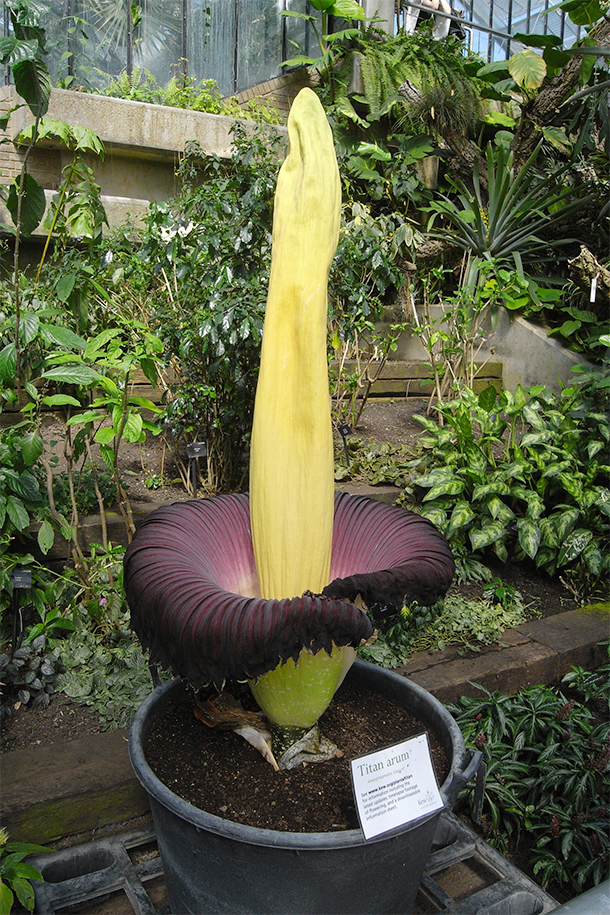 A Fascinating Botanical Wonder
A Fascinating Botanical Wonder
Despite the challenges in studying its reproductive habits, the corpse plant remains a subject of fascination for botanists and plant lovers worldwide. “It’s amazing how this plant figured out how to smell like death to reproduce,” said Hill. In some cases, insects have even been observed mating inside the plant’s structure, though the exact pollinators responsible for its reproduction are still not fully understood.Peter Wilkie, a botanist at RBGE, explains that understanding the titan arum also requires considering its tropical origins. "It needs to emit heat even in hot, humid climates to attract pollinators," he said. Research has shown that the plant’s temperature can reach up to 36°C (97°F), matching human body heat.Though New Reekie’s bloom lasted only a few days, its allure endures. The next time it flowers, thousands of people will likely return to catch another glimpse—and a sniff—of this rare natural wonder.
 A Rare and Tricky Bloom
A Rare and Tricky BloomNew Reekie is a 22-year-old titan arum that arrived in Edinburgh in 2003 from the Netherlands. It began as a small dormant corm (a tuber-like structure), no bigger than an orange. By 2010, it had grown so massive that zoo-grade scales, typically used for baby elephants, were needed to weigh it—coming in at an astonishing 153.9kg (339 lbs). The plant first bloomed in 2015, and since then, it has flowered every two to three years. My visit coincided with its fifth bloom.Paulina describes the plant as surprisingly easy to cultivate, needing little more than heat, water, and fertilization. But when the flower is about to bloom, things get hectic. "It’s like getting a child ready for the big world," she joked, reflecting on the intensive preparations required for such a rare event.The flowering cycle of the titan arum is notoriously slow and energy-draining, requiring anywhere from 11 to 15 years for the plant to accumulate enough resources to bloom. The sheer size of the flower head—technically called an inflorescence—makes it one of the largest unbranched flowering structures on Earth. In the wild, it originates from Sumatra, Indonesia, where it is pollinated by insects attracted to the smell of decaying animals.Myth, Mystery, and Misconceptions
According to Yuzammi, a botanist from Indonesia and expert in the Amorphophallus genus, some locals find the corpse plant both fascinating and frightening. "There’s a myth that it can swallow humans because its stalk resembles a snake," she explained. However, the plant has also enchanted botanists worldwide since the Italian explorer Odoardo Beccari first described it in 1878. Beccari collected samples from Sumatra and introduced them to Europe, where the plant quickly became a sensation.Titan arums flowered for the first time in cultivation at Kew Gardens in London in 1889. When the plant bloomed again in 1926, so many visitors flocked to see it that police had to manage the crowds. These blooms remain rare events, making headlines every time they occur. Until 1989, only 21 recorded blooms had occurred globally.Not a Flower in the Traditional Sense
Though it resembles a gigantic flower, the titan arum’s structure is more complicated than it appears. What looks like a single flower is actually a collection of small male and female flowers hidden at the base of the yellow spadix. The outer, petal-like spathe unfurls to attract pollinators and protect the flowers during fertilization. This makes the titan arum the largest unbranched flowering structure in the world, though not technically the largest flower.The life cycle of the titan arum alternates between dormant and leafing stages, where no flowers appear. During the leafing phase, the plant produces a single giant leaf—often mistaken for a tree—that photosynthesizes and stores energy in the corm below ground. When conditions are right, the plant emerges from dormancy to produce its famous inflorescence.The Role of Smell and Heat
Pollination relies heavily on the plant’s infamous stench. The corpse plant mimics the odor of decaying animal flesh to attract carrion-loving insects such as flies, beetles, and cockroaches. The smell is strongest at night, when pollinators are most active. Jane Hill, a chemical and biological engineer at the University of British Columbia, likened the scent to that of a dried-out dead mouse.Hill’s 2023 study identified 32 volatile compounds emitted by the male and female flowers, suggesting that each sex produces different odors to attract specific insects. The titan arum also releases these scents in short pulses, in sync with bursts of heat from the spadix. This ability to radiate heat allows the plant to mimic the warmth of decomposing bodies, tricking insects into thinking they’ve found food or a suitable place to lay eggs. The plant’s red-purple spathe adds to the illusion, resembling rotting meat.
 A Fascinating Botanical Wonder
A Fascinating Botanical WonderDespite the challenges in studying its reproductive habits, the corpse plant remains a subject of fascination for botanists and plant lovers worldwide. “It’s amazing how this plant figured out how to smell like death to reproduce,” said Hill. In some cases, insects have even been observed mating inside the plant’s structure, though the exact pollinators responsible for its reproduction are still not fully understood.Peter Wilkie, a botanist at RBGE, explains that understanding the titan arum also requires considering its tropical origins. "It needs to emit heat even in hot, humid climates to attract pollinators," he said. Research has shown that the plant’s temperature can reach up to 36°C (97°F), matching human body heat.Though New Reekie’s bloom lasted only a few days, its allure endures. The next time it flowers, thousands of people will likely return to catch another glimpse—and a sniff—of this rare natural wonder.
